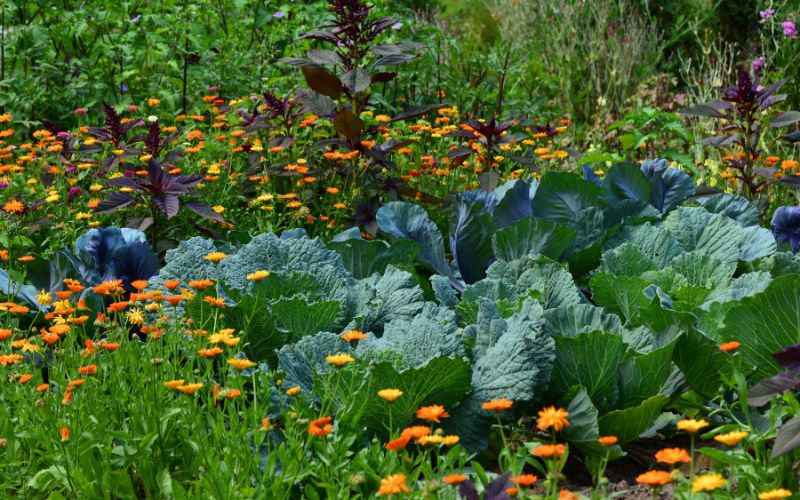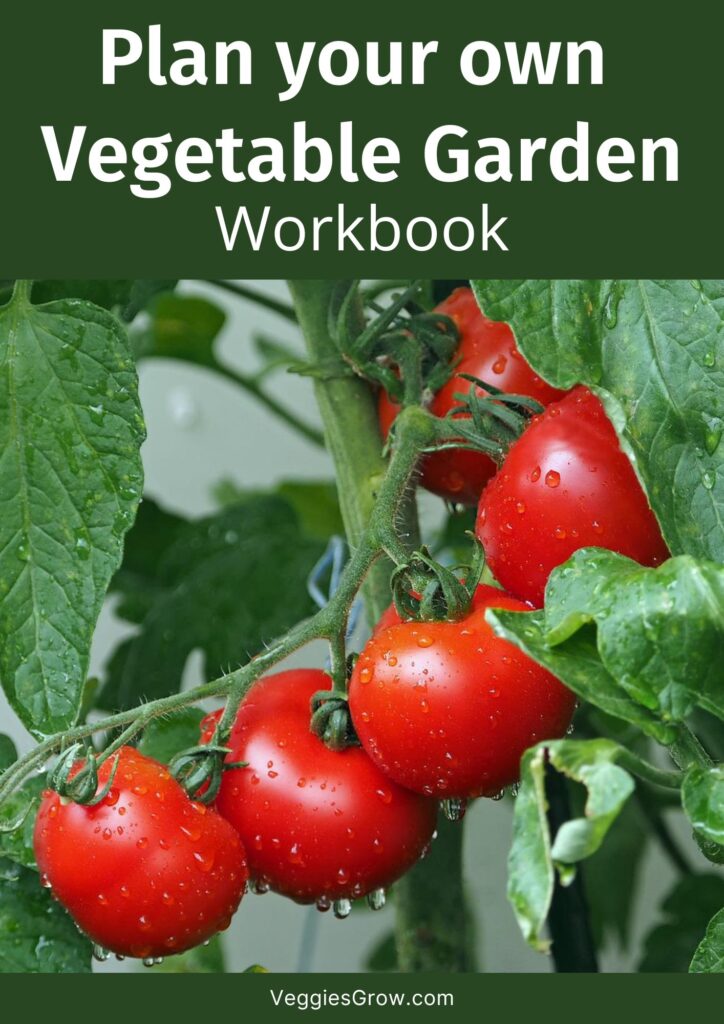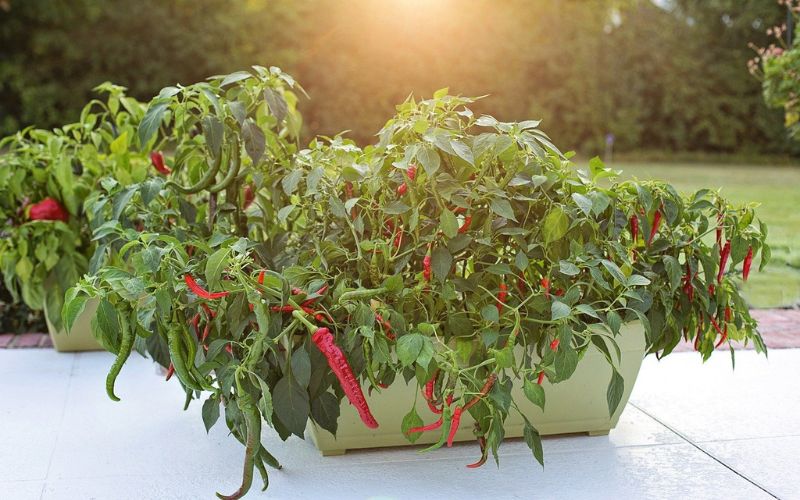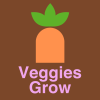Home vegetable gardens are usually one of 3 types:
- In-ground vegetable gardens
- Raised bed vegetable gardens
- Container vegetable gardens
Although there are other types of vegetable gardens, such as vertical and hydroponic gardens, these types of vegetable gardens require a high level of technical knowledge and expertise to start and run, and are not dealt with in this article.
In this article, we will be going through the advantages and disadvantages of each of these 3 types of home vegetable gardens and how to determine which ones are the most suitable for you.
The type of vegetable garden that would be best for you depends on a mix of the space available for you to garden, the types of plants that you want to grow, and how much money you can invest into starting a garden. Here’s a summary of the differences among each of the three types of gardens before we dive deeper.
| Type of Vegetable Garden | Space | Cost | Maintenance | Notes |
| In-ground vegetable garden | high | low | low | Needs actual garden space but can grow all types of vegetables without a problem. |
| Raised-bed vegetable garden | medium | medium to high | medium | Needs some garden space or a spacious balcony or terrace but can be used to grow all types of vegetables if the beds are large enough. |
| Container vegetable garden | low | high | high | Can be placed anywhere that gets enough sunlight but difficult to grow some types of vegetables. |
In-ground vegetable gardens

To start an in-ground vegetable garden, all you have to do is to remove weeds and stones, work in some compost and other organic amendments, and then add in your seeds or transplants.
Apart from some compost, which you can make or buy, very basic gardening tools, such as a shovel, and good quality seeds or transplants, there are no other costs involved. This makes an in-ground garden the cheapest option.
Despite this, you’ll have to have suitable garden space to start an in-ground vegetable garden. The actual area of the garden won’t matter that much. A Garden space that’s just about 12” wide is more than enough to plant a single row of vegetables. What’s more important is that the soil is of good quality, well-draining and that the space gets enough sunlight.
The proposed garden space should have soil that’s about 30” deep. You’ll be able to manage with shallow soil near a boarder that’s at least 8” deep but you’ll only be able to plant smaller shallow-rooted plants, such as onions, herbs, and leafy vegetables. You can refer to our vegetable plant root depth guide to determine what you’ll be able to plant.
The soil must be of a good quality or you’ll have to amend it. Most vegetables prefer well-draining loam soils, as they hold the right amount of water, nutrients, and oxygen. If you have sandy or clay soil, it’ll need quite a bit of amending or you’ll only be able to grow certain types of vegetables that can tolerate these soils.
The garden space should only have a slight slope so that water drains from your garden without remaining stagnant. Too much of a slope would result in the constant loss of topsoil and nutrients and soil organisms with it.
This garden area should ideally get at least 4-6 hours of sun each day. You may be able to manage with just 2-3 hours of sunlight a day but you’ll be limited to growing just a few types of leafy vegetables that prefer shade.
In addition, it would be best if this garden area was easily accessible and there was a water source nearby.
Overall, in-ground vegetable gardens are the easiest and cheapest to start but you’ll have to have suitable garden space to be able to grow different types of vegetables well. If you don’t have suitable garden space, you can consider growing vegetables in raised beds or containers, although these types of vegetable gardens have other disadvantages.
Raised bed vegetable gardens

The raised bed vegetable garden is the most traditional type of vegetable garden and the type that is immediately pictured by most people. Despite its aesthetic appeal and the benefits it provides over an in-ground vegetable garden, it can be pretty expensive to start and may not suit every space or gardener.
Raised bed vegetable gardens allow you to create a semi-controlled growing area for your vegetable plants. Most vegetables need loamy soil that drains well to grow properly and if you don’t have suitable garden soil, raised beds may be a good alternative for you. There are many types of vegetables and herbs that you can grow directly in sandy soil once you have worked in enough organic matter, but clay soil can be much trickier as drainage is poor.
Another reason that you may want to use raised beds is if your garden soil is saline or known or suspected to be contaminated. In this case, you may want to install raised beds that are not connected to the soil and are supported by stilts. You’ll only be able to have raised beds of a certain size or they may get too heavy, and they will usually cost more than similarly sized raised beds that are connected to the ground.
Drainage is usually not a problem at all with raised beds as you can fill your raised beds with soil and mixes that drain as much as needed and create a leveled surface. This makes raised beds ideal for gardens that have poor drainage or steep slopes.
If a garden drains poorly, you can even make raised beds that are disconnected from the garden soil. When the slope of a garden is too steep and run-off is high, you can grow vegetables directly in the ground at the highest elevations but not on the slope itself or at the lowest points. To be able to grow vegetables on the slope itself, you can install raised beds in a step-wise manner to create smaller areas of level ground to grow in.
Raised beds are useful to keep pests away. Snails, burrowing mammals, and all sorts of flying pests can be easily kept away by planting your vegetables in raised beds.
Copper traps and other mechanisms that are useful in keeping snails away can be more easily fitted onto raised beds. At the same time, your vegetable plants are safely elevated and away from snails. If you have a problem with burrowing mammals stealing vegetables that grow underground, you can install raised beds with a narrow mesh at the bottom to stop burrowing animals from entering your raised bed.
Covers are more easily added to raised beds than in-ground vegetable gardens, which are ideal for keeping flying insects and birds away from your vegetable plants. Winter covers can also be installed easier on raised beds allowing you to create a cold frame during the colder periods but remove them when the weather gets warmer.
Raised bed vegetable gardens are easy to care for because you wouldn’t need to bend much to weed or reach the base of your plants, making them ideal for the elderly or those who have problems bending. Additionally, raised beds usually need less weeding if you fill them up with weed-free soil.
Finally, there’s the aesthetic appeal of raised beds. Adding raised beds to your garden can help you group your plants and create a neat and tidy garden. You can even create tiered raised beds to show off all your plants at once, which is especially suitable for salad and herb gardens.
Despite all its advantages, raised beds are obviously much more expensive and can be time and effort intensive if you are DIYing and building raised beds by yourself. The cost of raised beds will depend on how large and deep they are and also the material that you are using to build them. The time and effort needed to build the beds will also depend on the type of raised beds that you are building but also on the experience and tools available for you to work on your material of choice.
Another drawback of raised bed vegetable gardens is that they may not be suitable for all garden spaces. If you are trying to grow in a narrow strip of land just outside your home, adding raised beds would just limit the amount of room you have rather than enhance it. Similarly, raised beds can be quite heavy, they aren’t suitable for all balconies, terraces, and rooftops. You must check to see how much weight these places can bear before placing them as you could risk damaging the building. In these types of spaces, a container garden will be able to provide you with similar benefits while not blocking or posing a risk to buildings.
Read more: 10 Reasons Why You Should Use Raised Beds For Your Vegetable Garden
Want a step-by-step guide to planning your vegetable garden? Download our FREE workbook here!

Container vegetable gardens

Container vegetable gardens are my favorite type of garden because you can place containers pretty much anywhere and create a garden, even when you don’t actually have a garden. This doesn’t mean that container vegetable gardening is easy. Container vegetable gardens actually need more time and care than raised beds or in-ground vegetable gardens, so you should be sure that you’ll be able to give your container vegetables the attention they need before starting.
Tomatoes, eggplants, peppers, carrots, lettuce, cabbage, onions, garlic, and most other types of vegetables can be grown in containers. The size of the container needed for each type of plant usually depends on how deep its roots grow. Recommended container sizes for commonly grown vegetables and herbs
Container vegetable gardens need some initial investment to start but you can usually start a container vegetable garden for much cheaper than an average raised bed vegetable garden, but it’s usually much more costly than just growing vegetables directly in-ground. You’ll mainly need to purchase suitable containers and potting soil and/or other substrates because garden soil alone gets compacted in containers and eventually completely blocks drainage. Ultimate guide on starting a container vegetable garden
You can keep your garden as close to you as possible when you use containers to grow vegetables. This makes caring for your vegetable plants a lot easier because you can place them just outside a door, on a terrace or balcony, or along a path that you use every day so that you can check them every time you pass them without having to make a special effort to do so. This makes container vegetable gardens ideal for those who work long hours outside the house and may only have time for their gardens early in the morning or rather late at night.
Similar to raised beds, you can use containers to grow vegetables if you don’t have the right type of soil. For example, the in-ground garden where I used to grow my vegetables in had a very high water table, which meant that just 2-3 inches below the ground, the soil was almost always moist even though it was well draining. I had no problem growing tomatoes, okra, eggplant, peppers, and other summer vegetables but when it came to luffa, the plant grown directly in the ground only flowered but didn’t produce any fruits. So, I mixed sand with a generous amount of compost and added the mixture into containers that I kept directly on the soil to grow luffa.
Containers can also be used if your garden soil is not suitable for growing food, in case you know or suspect that it may be contaminated.
Growing vegetables in containers can be helpful for pest and disease control as well. If one of your plants is affected by a pest that isn’t that mobile, you can easily move the plant away from your other vegetable plants while you treat the affected plant. This way, the pest is less likely to spread.
In containers, you can provide your plants not only with the best types of soil but also the correct amount of nutrients and water based on the type of plant and growth stage. Tomato plants don’t do well in waterlogged conditions. Heavy rains can make even the best-draining gardens waterlogged, which can have a long-lasting negative effect on tomato plants and other vegetable plants that don’t do well and even develop soil-borne diseases under water-logged conditions. If these plants are grown in containers, all you have to do when it starts to rain heavily is to move them from open areas into a more sheltered area until the days are dryer.
The additional control you get over your plant can be advantageous but also means that you’ll need to spend more time and effort caring for your plants. Container-grown vegetable plants need to get all their water and nutritional requirements from the limited amount of soil or substrate in the container.
This means that the container must always have enough but not too much water or nutrients available to the plant. Since the water must drain well, the soil in a container will usually dry out within the day if watered early in the morning and will need daily watering. Container vegetable plants may need to be watered as much as twice a day under very warm conditions. How to see if your container vegetable plant needs to be watered.
Similarly, container-grown vegetables can be easily affected by nutrient deficiencies and will need to be fertilized frequently. For example, blossom end rot usually affects tomatoes that are grown in containers, rather than those grown in raised beds or directly in the ground. Nutrient deficiencies weaken plants making them easily affected by pests and diseases. This means that you’ll have to keep a close watch on your plants and be able to identify the first signs of nutrient deficiencies and treat them as soon as possible.
Read more: Advantages and Disadvantages of Container Gardening for Vegetables
How to Choose the Best Vegetable Garden for Your Home?
An in-ground vegetable garden is the easiest and cheapest type of vegetable garden to start and requires a minimum amount of care and maintenance thereafter. Despite this, you must have enough suitable garden space to start one, which will not be suitable for those with no or limited garden space.
Raised bed vegetable gardens can be installed in gardens that don’t have suitable soil and drainage but meet other conditions needed for a vegetable garden, such as enough sunlight. Raised-bed gardens can be expensive and make take some investment and quite a bit of time and skill if you are making them yourself. Despite this, the initial investment may pay off by allowing those who don’t have suitable soil or find it hard to bend and by making it easier to install netting for pest control or cold frames. Although raised beds can be installed on balconies and terraces, they aren’t suitable for all buildings.
Container vegetable gardens are more costly and slightly harder to start than in-ground vegetable gardens but they are usually cheaper and definitely much easier to start than raised bed gardens. Container-grown vegetables can be placed in cemented or concrete urban areas that lack or have very little garden space and are suitable for balconies, terraces, and rooftops. Despite this, container-grown vegetables require frequent watering, fertilizer, and care making this type of vegetable garden the most time and energy intensive in the long run.
The best type of garden for you will mainly depend on the garden space available to you and how much you can spend to start your vegetable garden. If you are one of those lucky ones that have suitable space for all 3 types of gardens, you can choose based on how much time and effort you can spend maintaining and caring for your vegetable garden. Alternatively, you can start one, two, or even all three types of gardens and see which one you prefer the best based on what you will be growing and the care needed.
Now that you know the pros and cons of in-ground, raised bed, and container gardens, here’s how to choose and start your garden:
- Assess Your Space – Look at the area you have available. Do you have a backyard, a small patio, or just a balcony?
- Consider Your Budget – Decide how much you’re willing to spend. In-ground gardens are the cheapest, while raised beds and container gardens may require more investment.
- Choose the Right Type – Pick the gardening method that best fits your space, budget, and time commitment.
- Start Small – If you’re new to gardening, begin with a few easy-to-grow vegetables like lettuce, tomatoes, or herbs.
- Prepare Your Soil & Materials – If using in-ground gardening, test and amend your soil. If using raised beds or containers, get quality potting soil and compost.
- Plant & Maintain – Water regularly, provide nutrients, and watch for pests.
- Track Your Progress – Keep notes on what works well so you can refine your garden for next season.
This post is part of a series of blog posts on the 7 steps of planning a vegetable garden.
Want a step-by-step guide to planning your vegetable garden? Download our FREE workbook here!


